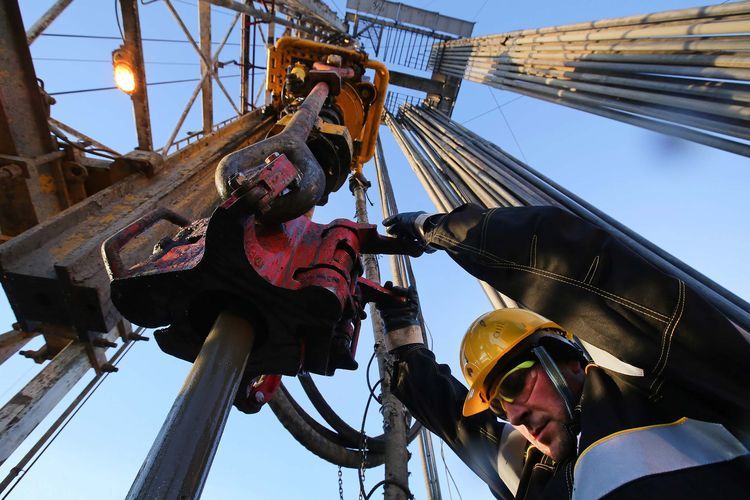
Big Oil is starting to beat the crude-market slump as the industry rediscovers how to make money at lower prices.
Exxon Mobil and Shell are forecast to more than double second-quarter profit from a year earlier, far outstripping the 8 percent gain in benchmark Brent crude, according to analyst estimates. Chevron will return to profit, while France’s Total is expected to report a third consecutive quarter of higher year-on-year earnings.
Oil majors are learning to live with $50 crude, with most CEOs focused on remaining profitable through a downturn they expect to last until at least the end of the decade. Investors have yet to reward the producers’ cost-cutting efforts — with the energy sector the worst performer in the MSCI World Index — but that may change as cash flows strengthen, according to Sanford C. Bernstein.
“We have to remain very disciplined about spending and not assume that the price will go up,” BP Chief Executive Officer Bob Dudley said this month in Istanbul. “The years of $100 oil will turn out to be an aberration. We used to make money at $40 oil, we used to make money at $25 oil.”
Europe’s seven-biggest oil companies together generated 42 percent more cash in the second quarter than a year earlier, easily enough to cover cash dividends and capital expenditure, Bernstein analyst Oswald Clint wrote in a July 19 report.
Clint, who assumes an oil price of $50 a barrel for this year and 2018, said over the next two to three quarters producers should generate enough cash to also phase out dividends paid as shares. Eliminating those scrip dividends would prevent a further dilution of share value and open the way for buybacks, he said.
Total, Europe’s second-biggest oil company, can cover the cash part of its dividend at $50 oil this year. Exxon and Shell covered their payout with cash from operations in the first quarter at an average price for Brent of just under $55. BP, which didn’t generate enough money to cover the payout in the three months to March, will be able to do so this year if oil is between $50 and $55, Chief Financial Officer Brian Gilvary said in May.
Brent crude traded at $50.60 a barrel as of 12:59 p.m. in Singapore on Wednesday.
Spending Increase
Despite cutting billions of dollars of capital expenditure, the producers are now proceeding with projects they began before the downturn, including BP in the North Sea and Eni SpA in Africa. The industry is expected to increase spending “modestly” in oil and gas exploration and production projects this year after a 44 percent plunge between 2014 and 2016, the International Energy Agency said this month.
“Though costs may now start rising with a slow, yet gradual recovery in investment, a large portion of the savings in costs may be structural and remain,” said Philipp Chladek, a London-based analyst at Bloomberg Intelligence. “Cost cuts were not only from innovation and technological advancements, but also from managerial adjustments such as re-thinking and streamlining projects.”
Investors are still wary. Brent crude near $50 a barrel is about half the level of three years ago, despite OPEC’s efforts to boost prices by cutting production.
The MSCI World Energy Sector Index is down 9 percent this year, with the 90 companies that make up the index together losing $218 billion in market value. Shares of all of the Big Five — Exxon, Shell, Chevron, Total and BP — are down more than 10 percent.
Industry profit in the first quarter was the best in two years as the effects of cost cutting began to show. That gave way to the realization that OPEC’s deal to curb output wasn’t eliminating the global supply glut as quickly as intended by the exporters’ group led by Saudi Arabia. Even an extension of the curbs until March 2018 couldn’t boost prices and prevent banks including Goldman Sachs Group Inc and BNP Paribas SA from cutting their oil-price forecasts.
The mean estimate of analysts for Exxon’s 2017 profit has been cut by $940 million in the past month. Shell’s has been reduced by almost $591 million, Chevron’s by $360 million, Total’s by $201 million and BP’s by $409 million, according to the data.
Still, Bernstein expects cash flow growth to provide the trigger for a turnaround in the companies’ fortunes.
“Big Oil is a value sector in need of a catalyst and that catalyst is scrip dividend removal and share repurchases,” Clint said. “We see that occurring over the next six to nine months.”
Recommended for you
